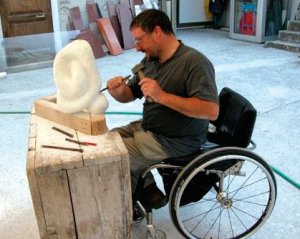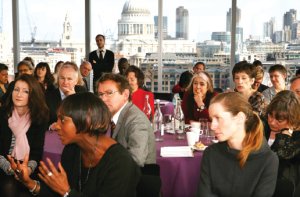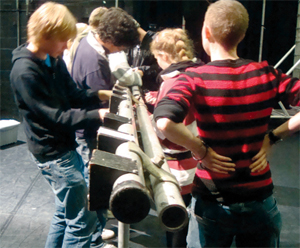
“Everyone has the right freely to participate in the cultural life of the community, to enjoy the arts and to share in scientific advancement and its benefits.” That statement from the Universal Declaration of Human Rights enshrines the importance of culture in communities. But the way in which creative thinking can help shape the future of communities is still not widely recognised, though the evidence is beginning to be gathered from case studies across the globe.
Creative and cultural practitioners can bring a fresh perspective and a new set of skills to bear on some of the pressing problems facing communities that are experiencing change, particularly areas of rapid population growth. By challenging perceived orthodoxies and seeing problems in a new way, we can make culture a driver of public policy, as well as one of its outcomes.
These thoughts are borne out by Arts Council England’s (ACE) recent experience in Peterborough. Through the Perception Peterborough process, a mirror was held up to the city and its people, to see its assets and challenges through others’ eyes. This dynamic and creative visioning process was designed specifically for Peterborough, though the principles could be applied elsewhere. It was initiated and supported by Arts Council England, East, in partnership with Peterborough City Council, Opportunity Peterborough, the East of England Development Agency, English Heritage, Sport England, the Museums, Libraries and Archives Council, and the Heritage Lottery Fund. Over four days in September, 50 local representatives and international creative thinkers representing more than 10 nationalities, discussed the growth and development of Peterborough. It was a moment when artists and cultural professionals came together to consider issues that are traditionally the preserve of regeneration specialists.
Among the artists involved were Richard Pierre-Davis, co-founder of the Mongrel Media artist collective, a pioneering group that uses art and technology to empower diverse and marginalised communities; Loraine Leeson, an artist whose work on the politics of health is widely acclaimed; John Newling, who has an international reputation for complex projects requiring diverse teams; and Ruud Kuijer, a leading contemporary sculptor from Holland.
Perception Peterborough drew on international experience. Patama Roonrakwit, an architect from Thailand, found parallels between Peterborough’s development and urban development issues in Bangkok. Jeff Lederer, General Manager at the University of Waterloo School of Architecture in Ontario, Canada, brought a fresh perspective from across the Atlantic. Benjamin Barber, political theorist, best-selling author and former adviser to President Bill Clinton, chaired discussion sessions, and Jan-Gustav Strandenaes, a consultant with the United Nations, was the concluding keynote speaker.[[Peterborough’s energy and commitment could provide a model for other growing cities across the globe]]
Under the guidance of creative consultancy Haring Woods Associates, artist-led studio Proboscis facilitated creative activities such as social mapping. ‘StoryCubes’ were used as tactile thinking tools for exploring relationships and narratives. Together, the delegates pieced together a three dimensional map of the city that considered the needs of local communities and the impressions of visitors. Within the overarching theme of the environment, they focused on three related themes: growth and development of the built environment; social cohesion within a climate of migration and green infrastructure and environmental technologies.
A number of fresh ideas emerged from the workshops. Perhaps the most exciting was the proposal to take the city’s approach to regeneration to the United Nations Urban Forum in New York in 2010. Strandenaes, suggested that Peterborough’s energy and commitment would be of great interest to the UN as it could provide a model for other growing cities across the globe.
Another session focused on how to improve Peterborough’s underused public spaces to enhance the built environment. Participants also explored the interactions of the city’s various populations and the positive impact of demographic change. The education workshop emphasised the importance of integrating the new university centre into the life of the city, to ensure it provides new opportunities for local people as well as bringing new talent to the area.
You might ask why ACE is involved in Perception Peterborough. We know from experience that culture-led regeneration works. We’ve seen it happen time and again across the UK and the world. ACE’s approach to advancing the arts in the East of England is to build on indigenous strengths and identify where the arts and creativity can be a real catalyst for change. We aim to create the conditions to enable investment so that truly remarkable things can happen. Our Shared Prospectus with the East of England Development Agency is an important part of our approach, and our relationship with Regional Cities East operates on the same principles. The six cities in the alliance (including Peterborough) have agreed that they each need a unique cultural selling point that defines their distinctive character and underpins their economic growth.
So what next for Peterborough? The Perception Peterborough process brought clarity to existing plans and generated fresh ideas for the future. These will be tested over the coming months, but they already give a sense of direction. Peterborough’s challenge now is to embed these creative ideas into its plans for the city, to show that the arts and culture not only stimulate regeneration, but are for the benefit of everyone.


























